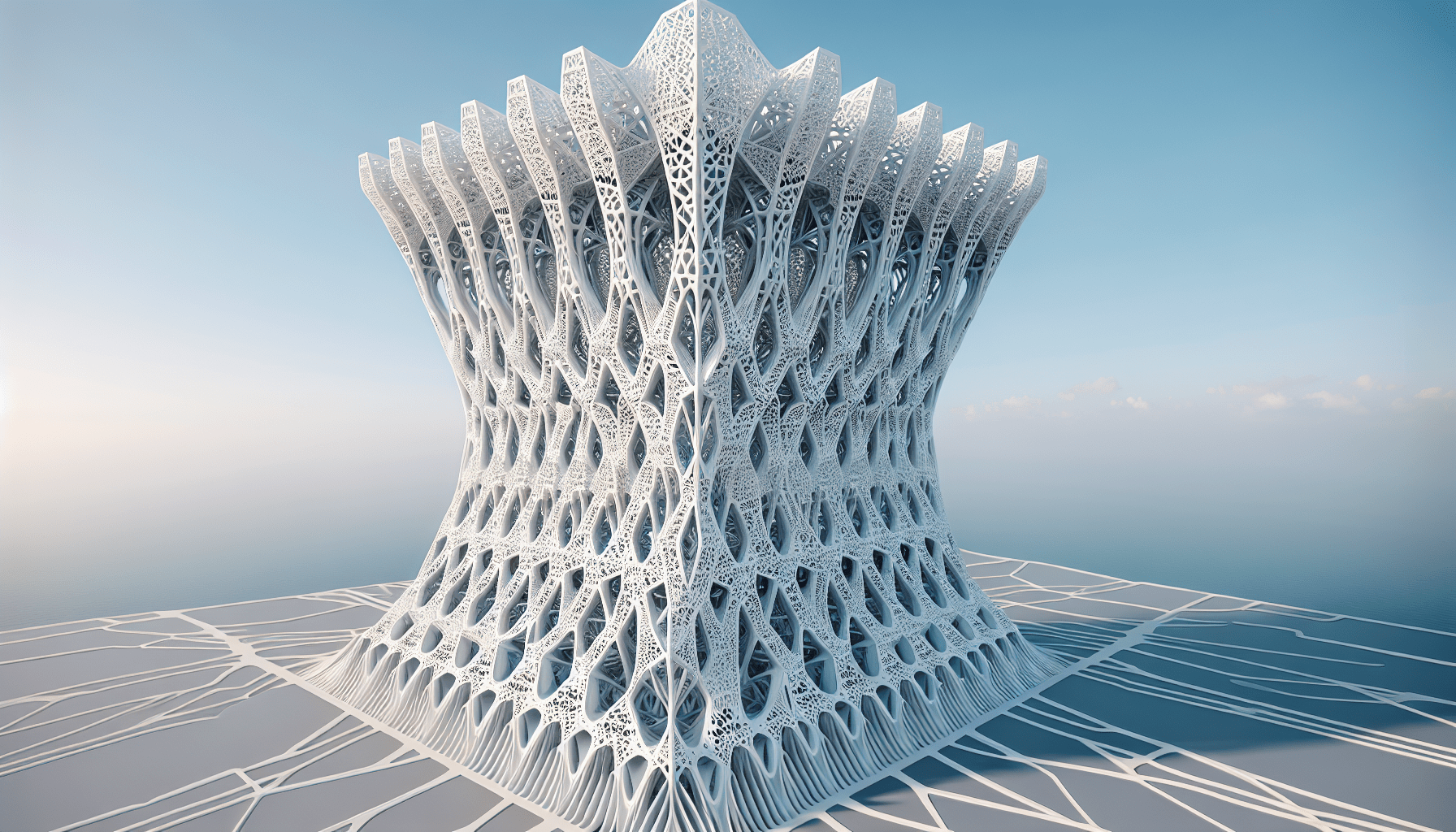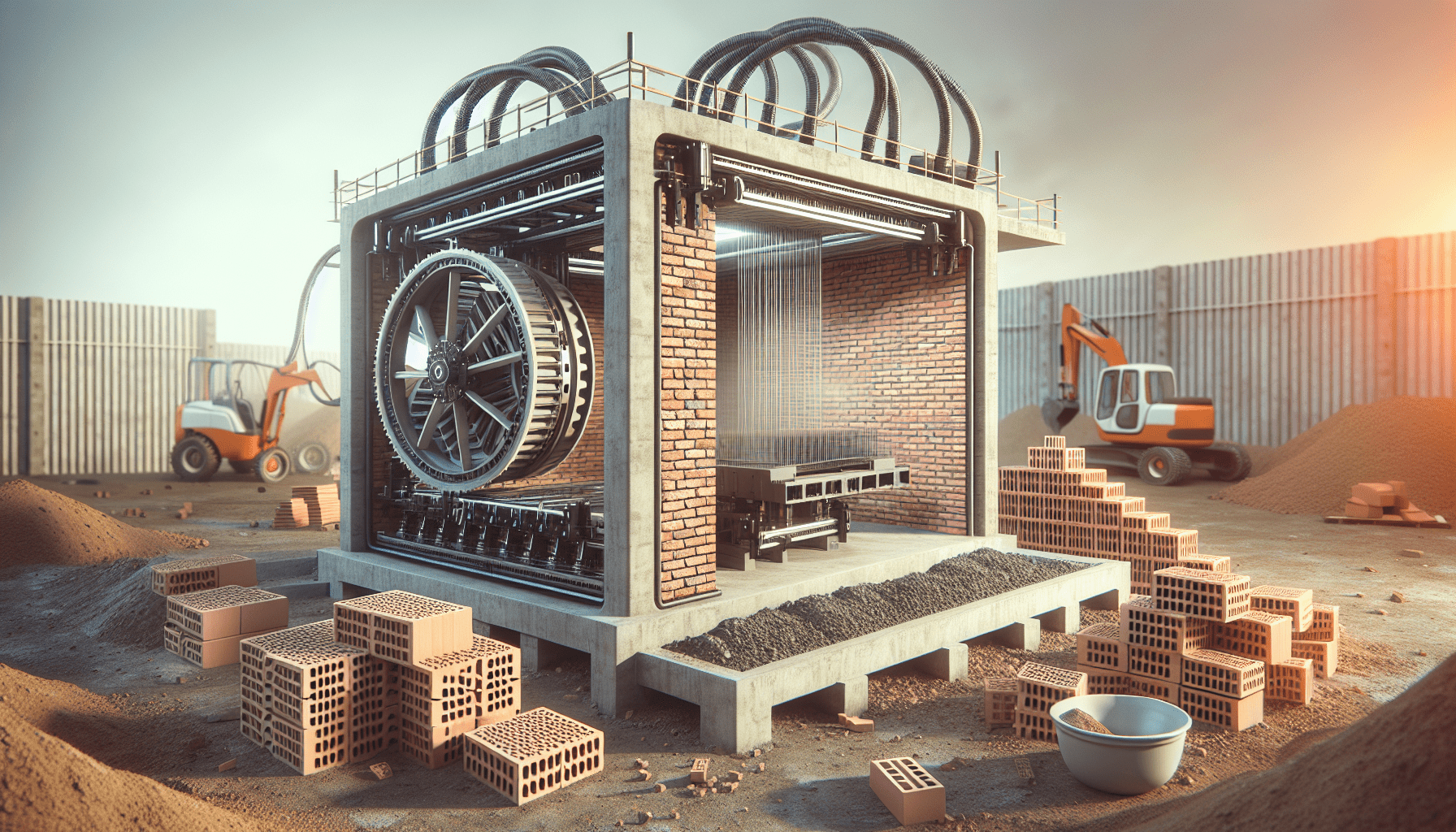Creality 3D Printer, K1 SE Fully Assembled Auto Leveling FDM 3D Printers for Kids and Beginners, 600mm/s Max High-Speed Printing, Core XY All Metal Structure, Larger Print Size 250x220x220mm
$279.00 (as of June 19, 2025 23:45 GMT +00:00 - More infoProduct prices and availability are accurate as of the date/time indicated and are subject to change. Any price and availability information displayed on [relevant Amazon Site(s), as applicable] at the time of purchase will apply to the purchase of this product.)Get ready to witness an architectural marvel like no other as The White Tower in Switzerland is set to become the tallest 3D printed structure in the world. Standing at a staggering 30 meters tall, this 3D printed concrete tower will push the boundaries of what is possible with this technology. With five levels and a wide range of artistic uses, the White Tower will showcase the incredible potential of 3D printing in construction. The project, spearheaded by ETH Zurich, involves printing 32 segments off-site and assembling them at the Swiss town of Mulegns. With the inclusion of steel rebar for added strength, this structure promises to be a testament to the creative possibilities that lie ahead in the field of 3D printed buildings. Although this temporary tower will be dismantled in 2029, it sets the stage for future mind-bending structures wherever it may be re-erected.
Background Information
Overview of the White Tower project
The White Tower project aims to construct the world’s tallest 3D printed structure, located in Switzerland. This groundbreaking project showcases the potential of 3D printing technology in the field of construction. The tower will be made of 3D printed concrete and will reach a height of 30 meters (approximately 100 feet). It will consist of five levels, each with a width of 6-8 meters, and will serve as a venue for theater, music, and other artistic endeavors in the town of Mulegns.
Purpose of the tower
The primary purpose of the White Tower is to demonstrate the capabilities of 3D printing in creating innovative and unique architectural designs. By pushing the boundaries of what is possible in construction, the project aims to inspire future advancements in 3D printing technology and its application in real-world projects. Additionally, the tower will serve as a cultural hub, providing a space for artistic performances and events in the Swiss town.
Method of construction
The construction of the White Tower involves the use of a custom-designed 3D printer developed by ETH Zurich, a renowned university in Switzerland. The printer is capable of printing large-scale structures using concrete material. The tower will be printed in 32 separate segments at an off-site location and then transported to the construction site for assembly. This method allows for more efficient printing and ensures that the tower is built to the desired specifications.
Design and Printing Process
Design work timeline
The design work for the White Tower project began in 2021, with a team of architects, engineers, and 3D printing experts collaborating to create the unique structure. The design process involved the use of computer-aided design (CAD) software to model and simulate the tower’s form and geometry. Iterations and refinements were made to optimize the design for 3D printing technology and structural stability.
Printing process and technology used
The printing process for the White Tower involves the layer-by-layer deposition of concrete material to create the desired shape and structure. The custom-designed 3D printer developed by ETH Zurich utilizes a combination of extrusion and robotic arm technology to precisely position the printing nozzle and control the flow of concrete. This advanced printing technology allows for the creation of complex geometries and intricate details that would be difficult to achieve through traditional construction methods.
Description of the custom-designed 3D printer
The custom-designed 3D printer used for the White Tower project is a state-of-the-art machine specifically tailored for large-scale construction printing. It features a robust frame and a precise positioning system to ensure accurate printing. The printer is equipped with a high-capacity concrete extruder and a sophisticated control system that monitors and adjusts the printing parameters in real-time. This allows for precise control over the printing process and ensures the quality and integrity of the printed structure.
Number of layers printed
Approximately 4000 layers are printed to construct the White Tower. Each layer has a height of approximately 6mm, resulting in a total height of 30 meters for the completed structure. The layer-by-layer printing process ensures the gradual buildup of the tower’s form and enables precise control over its geometry.
Segment printing and on-site assembly
To facilitate the construction process, the tower is printed in separate segments off-site. These segments are then transported to the construction site, where they are assembled to form the complete structure. This approach allows for efficient printing and assembly, as well as easier transportation of the printed components. The segments are designed to fit together seamlessly, ensuring structural integrity and stability.

Structural Stability and Reinforcement
Importance of structural stability in construction 3D printing
Structural stability is a crucial consideration in construction 3D printing, as it ensures the safety and longevity of the printed structure. The White Tower project recognizes the importance of structural stability and incorporates various measures to enhance the stability of the printed tower. By implementing reinforcement techniques and adhering to strict design and construction standards, the project aims to create a structurally sound and durable tower.
Use of steel rebar in the printed structure
To reinforce the printed structure, steel rebar is inserted vertically and horizontally into the tower as it is being printed. The steel rebar provides additional strength and stability, preventing the tower from tipping over or collapsing under load. This combination of 3D printed concrete and steel reinforcement ensures the structural integrity of the White Tower. The strategic placement of the rebar within the printed structure is carefully planned and executed to maximize its effectiveness.
Timeline and Completion
Start date of design work
The design work for the White Tower project began in 2021. This phase involved conceptualization, modeling, and refinement of the tower’s design to optimize it for 3D printing technology.
Start date of printing
The printing process for the White Tower started last year, following the completion of the design phase. The custom-designed 3D printer began layer-by-layer construction of the tower, gradually building up its form and structure.
Expected completion date
The White Tower project is expected to be completed and opened to the public later this year. The exact completion date will depend on various factors, including the printing speed, assembly process, and any unforeseen challenges that may arise during construction.
Opening to the public
After its completion, the White Tower will be open to the public, providing a unique cultural space for theater, music, and other artistic endeavors. The tower’s height and distinctive design will make it a captivating landmark, attracting visitors and showcasing the potential of 3D printed buildings.
Planned dismantling and relocation
Although the White Tower is a temporary structure, it is not destined for permanent demolition. The project organizers plan to dismantle the tower in 2029 but intend to re-erect it at other locations. This highlights the portability and flexibility of 3D printed structures, allowing for their relocation and reuse in different contexts.

Unique Features and Applications
Height and size of the White Tower
The White Tower will stand at an impressive height of 30 meters, making it the tallest 3D printed structure in the world. Its size and scale demonstrate the potential of 3D printing technology in constructing large-scale buildings. The tower’s height not only serves as a visual spectacle but also opens up new possibilities for vertical expansion and utilization of urban space.
Functionality for theatre, music, and art
The White Tower is designed to serve as a versatile venue for various forms of artistic expression, including theater, music, and art. Its spacious interior and multiple levels provide ample space for performances, exhibitions, and creative activities. The tower’s unique design and acoustics enhance the overall artistic experience, creating a captivating environment that immerses audiences in the world of creativity.
Portability and future relocation
One of the remarkable aspects of the White Tower is its portability. As a 3D printed structure, it can be disassembled, transported, and re-erected at different locations. This flexibility allows for the tower’s adaptation to changing needs and environments. It also showcases the potential of 3D printed buildings to address issues of temporary infrastructure, rapid urbanization, and architectural experimentation.
Implications for 3D Printed Buildings
Advantages of 3D printing in construction
The construction of the White Tower highlights the numerous advantages of 3D printing technology in the field of construction. These advantages include increased design freedom, reduced construction time and costs, enhanced sustainability, and improved accuracy and precision. 3D printing enables the creation of complex geometries and intricate details that would be challenging or impossible to achieve through traditional construction methods.
Feasibility of complex building geometries
The White Tower’s design pushes the boundaries of what is possible in architectural form and geometry. 3D printing technology allows for the realization of intricate and complex shapes that go beyond the limitations of conventional construction techniques. The tower’s unique design serves as a testament to the feasibility and potential of 3D printed buildings in creating visually stunning and functionally innovative structures.
Potential for innovative architectural designs
The White Tower project serves as a catalyst for future innovations in architectural design and construction. It showcases the transformative capabilities of 3D printing technology in creating buildings that are not only aesthetically pleasing but also highly functional and sustainable. As the technology advances, architects and designers will have even greater freedom to explore new forms, materials, and construction techniques, leading to a new era of architectural possibilities.
Public Opinion and Reactions
Perception of the White Tower project
The White Tower project has garnered significant attention and interest from the public. Its status as the world’s tallest 3D printed structure has captured the imagination of people around the world. The unique design and technological advancements demonstrated by the project have generated excitement and intrigue, positioning 3D printing as a key player in the future of construction.
Impact on the public’s perception of 3D printed structures
The White Tower project has undoubtedly had a positive impact on the public’s perception of 3D printed structures. By showcasing the potential of 3D printing technology in constructing large-scale buildings, the project challenges preconceived notions about the limitations of 3D printing in construction. It opens up new possibilities and encourages further exploration and adoption of this innovative construction method.
Relevance to the architecture and construction industries
The White Tower project holds great relevance to the architecture and construction industries. It serves as an inspiring example of how 3D printing technology can be integrated into traditional construction practices to create unique and sustainable structures. The project encourages collaboration between architects, engineers, and 3D printing experts, driving innovation and advancement in the field. The lessons learned from the White Tower project will contribute to the continued development of 3D printed buildings and shape the future of the industry.
Future Developments and Possibilities
Potential for taller and more intricate 3D printed structures
The successful construction of the White Tower paves the way for the development of even taller and more intricate 3D printed structures. As technology evolves and printing capabilities improve, we can expect to see buildings that exceed the current limitations of height, size, and complexity. The White Tower project serves as a stepping stone towards a future where 3D printed buildings become commonplace and push the boundaries of architectural design.
Advancements in 3D printing technology in construction
The White Tower project demonstrates the rapid advancements in 3D printing technology specifically tailored for construction applications. As research and development continue, we can anticipate further improvements in printing speed, material properties, and printing accuracy. These advancements will enhance the feasibility and efficiency of 3D printing in construction and enable the realization of ambitious architectural designs.
Integration of sustainable materials and practices
The future of 3D printed buildings lies not only in technological advancements but also in sustainability. As the construction industry strives to reduce its environmental footprint, the integration of sustainable materials and practices becomes paramount. The White Tower project sets the stage for the exploration of eco-friendly construction materials, such as recycled concrete or bio-based polymers, and the adoption of sustainable construction practices. These developments will contribute to a more sustainable and environmentally conscious built environment.
Conclusion
The White Tower project represents a significant milestone in the field of 3D printed buildings. As the world’s tallest 3D printed structure, it showcases the transformative potential of 3D printing technology in construction. The project demonstrates the feasibility of constructing large-scale buildings using 3D printing, opening up new possibilities for architectural design and urban development. Its unique features, such as portability and adaptability, highlight the versatility and flexibility of 3D printed structures. The White Tower is not only a testament to technological innovation but also a source of inspiration for future advancements in the field. In conclusion, the White Tower project underscores the profound impact of 3D printing on the future of architecture and construction.










